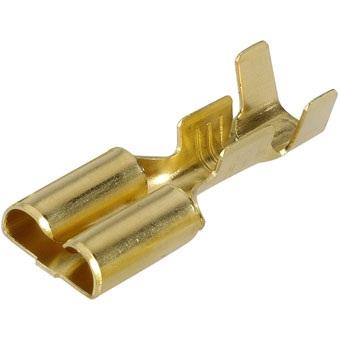
Originally Posted by
GlennD

That's a personal viewpoint. However, its not borne out by engineering facts. A crimped connection is governed by 3 variables. Wire gauge, crimp pressure and type of crimp. An operator can be trained very quickly to become highly accurate with a crimp tool and produce good crimps with close target parameters.
Now take soldering. The parameters are much less controllable. That's the reason why all solder joints used in military aircraft and spacecraft are x-rayed.
I say this because I've come across too many arguments stemming from lack of engineering knowledge on solder joint properties where your life could depend on it. Suppose someone on this forum takes it as gospel that a solder joint with covered with heatshrink is undisputably the best and goes ahead and does that for a critical connection. How do you know the solder had flowed correctly ? How do you know that flux hasn't built up between the metal-solder interface ? How do you check the joint is still intact when you cover it with heatshrink and install it in the vehicle, bending the connection point in the process ? Extend that over a few years ..with someone inexperienced in soldering.
That should be sufficient examples.
As you have said, there are bad crimps produced too. However, its easier to produce a good crimp than a good solder joint, in relation to automotive connections.
This is all interesting and no doubt correct. However (  ) I have never seen an aftermarket crimp on connection on a car that hasn't failed the gentle tug test... ie: the wire just pulls out if you tug on it. I reckon on cars soldering is the only 100% failure free way to go. Not in a million years is the joint going to fatigue and die in a car, especially if the harness is tied down so it can't move,
) I have never seen an aftermarket crimp on connection on a car that hasn't failed the gentle tug test... ie: the wire just pulls out if you tug on it. I reckon on cars soldering is the only 100% failure free way to go. Not in a million years is the joint going to fatigue and die in a car, especially if the harness is tied down so it can't move,
You simply can't compare manufactures wiring crimps (likely done with 20ton crimpers) the aftermarket merde used on cars 
seeya
Shane L.
Proper cars--
'92 Range Rover 3.8V8 ... 5spd manual
'85 Series II CX2500 GTi Turbo I :burnrubber:
'63 ID19 x 2 :wheelchair:
'72 DS21 ie 5spd pallas
Modern Junk:
'07 Poogoe 407 HDi 6spd manual :zzz:
'11 Poogoe RCZ HDI 6spd manual



 Reply With Quote
Reply With Quote
 ) I have never seen an aftermarket crimp on connection on a car that hasn't failed the gentle tug test... ie: the wire just pulls out if you tug on it. I reckon on cars soldering is the only 100% failure free way to go. Not in a million years is the joint going to fatigue and die in a car, especially if the harness is tied down so it can't move,
) I have never seen an aftermarket crimp on connection on a car that hasn't failed the gentle tug test... ie: the wire just pulls out if you tug on it. I reckon on cars soldering is the only 100% failure free way to go. Not in a million years is the joint going to fatigue and die in a car, especially if the harness is tied down so it can't move,





Bookmarks